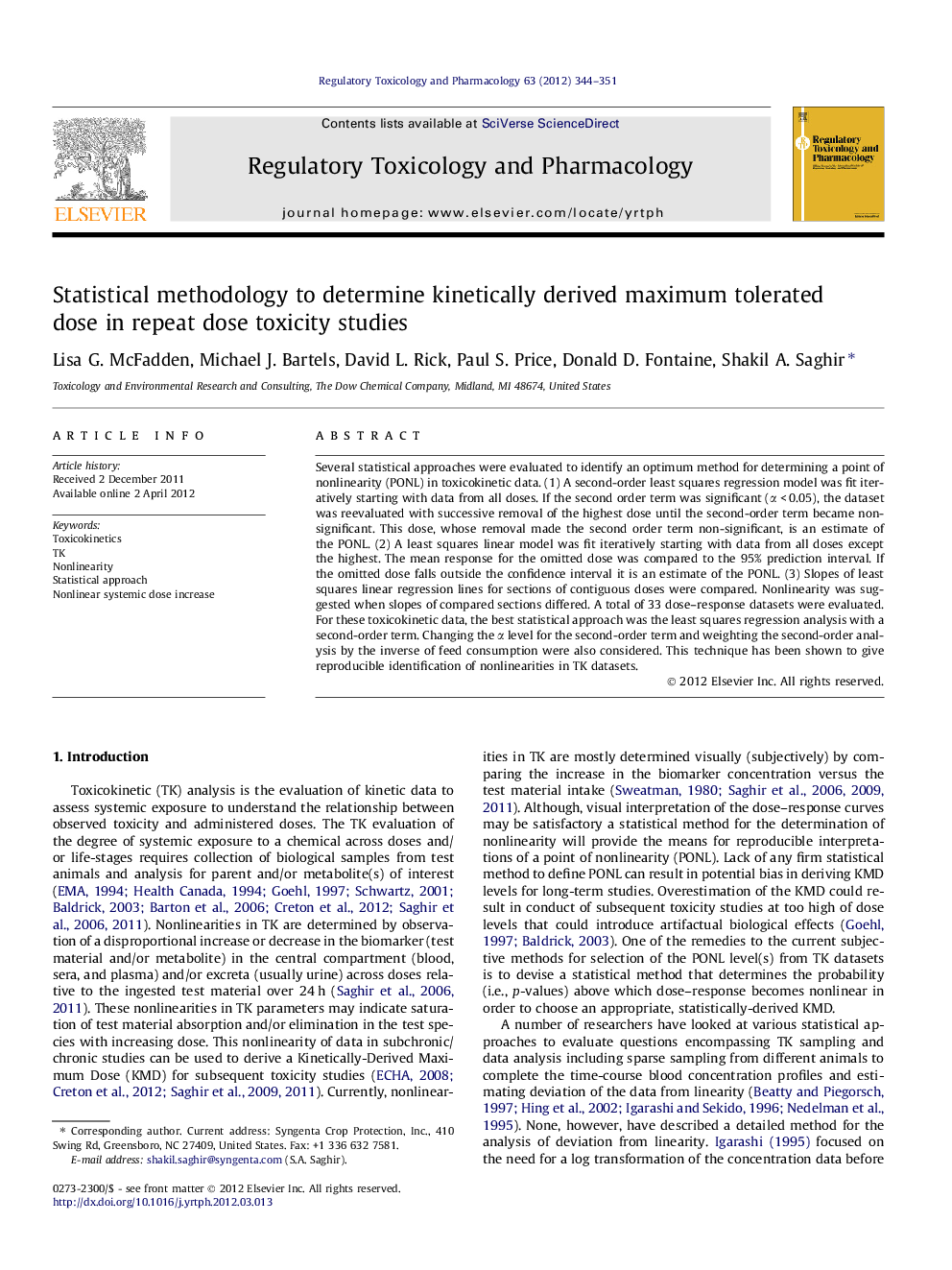| Article ID | Journal | Published Year | Pages | File Type |
|---|---|---|---|---|
| 5857415 | Regulatory Toxicology and Pharmacology | 2012 | 8 Pages |
Several statistical approaches were evaluated to identify an optimum method for determining a point of nonlinearity (PONL) in toxicokinetic data. (1) A second-order least squares regression model was fit iteratively starting with data from all doses. If the second order term was significant (α < 0.05), the dataset was reevaluated with successive removal of the highest dose until the second-order term became non-significant. This dose, whose removal made the second order term non-significant, is an estimate of the PONL. (2) A least squares linear model was fit iteratively starting with data from all doses except the highest. The mean response for the omitted dose was compared to the 95% prediction interval. If the omitted dose falls outside the confidence interval it is an estimate of the PONL. (3) Slopes of least squares linear regression lines for sections of contiguous doses were compared. Nonlinearity was suggested when slopes of compared sections differed. A total of 33 dose-response datasets were evaluated. For these toxicokinetic data, the best statistical approach was the least squares regression analysis with a second-order term. Changing the α level for the second-order term and weighting the second-order analysis by the inverse of feed consumption were also considered. This technique has been shown to give reproducible identification of nonlinearities in TK datasets.
⺠Statistical methods to evaluate nonlinearity in dose response for TK data. ⺠Statistical determination of point of departure (POD) from linearity. ⺠Comparison of different statistical approaches. ⺠Recommendation of best statistical approach to determination POD for TK data.
